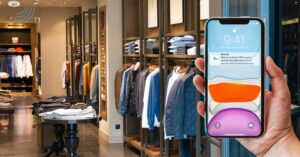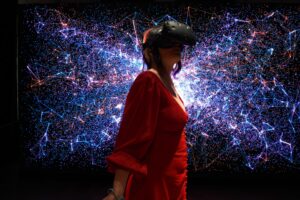Each library is both very similar and very different from each other. They all have their unique system, and it is very difficult to find what you are looking for when you first go without someone to help you. Libraries, which are so difficult for everyone, also have difficulties due to their inaccessibility. In the previous articles of our “Ways to Make Venues More Accessible” article series, we talked about museums, shopping malls, and banks. Although some of the ways of making these venues accessible are similar, there are also different ways in the dynamics of libraries. As in every place, making libraries accessible is a process, and this process is a little more detailed than in other venues. It is very important to remember that there are not only books in the library and to evaluate all the services offered by the libraries.

It is very important that the website, which is the first channel through which visitors reach the library, is accessible. You can benefit from this blog post to make your website accessible. But the libraries’ websites being accessible is not just about what’s written here. At the same time, each of the online resources on the library’s website should be accessible. In addition, information should be added to the website that your library is accessible, people with disabilities can easily go wherever they want in the library, simply find the resources they want and benefit from library’s events. In addition to these, transportation information should be given in this section, such as which public transportation are accessible on the way to the library and which part of the parking lot is easier for disabled people to access if arriving by private vehicle. In addition, accessible signs should be hung in the parking lot and entrances, and it should be ensured that it is usable for everyone by using wide doors and ramps at the entrance of the library.

Library staff must have the competence to help disabled visitors. Employees should receive sign language training, know the wheelchair-friendly roads in the library and direct visitors there, know the contents of the visually impaired section, and the use of headphones. It is important that they can easily communicate with visitors with disabilities.
Every area in the library that can be used by visitors must be suitable for disabled visitors. Every place such as the entrance of the library, toilets, resting areas, study areas, stairs, elevators, sections with books must be thought through very carefully. Arrangements should be made so that disabled visitors can move around comfortably in the library and access the resources they want. In addition, tables, computers, and shelves should be of suitable size for wheelchair users, and a part of the information desk where the library staff is located should be arranged for wheelchair users.

For visually impaired visitors, there may be a special section of speaking books, easy-to-read, Braille, and large print books. At the same time, separate sections can be created where they can listen to the books. In addition, some of the computers in the library may have screen adapters and special software. It is necessary to add subtitles to the audio resources for the hearing impaired, to provide headphones for the events in the library, and/or to be supported by sign language.
With our navigation service for the visually impaired, we strive to enable the visually impaired to move freely in libraries as they do in all interior venues.







